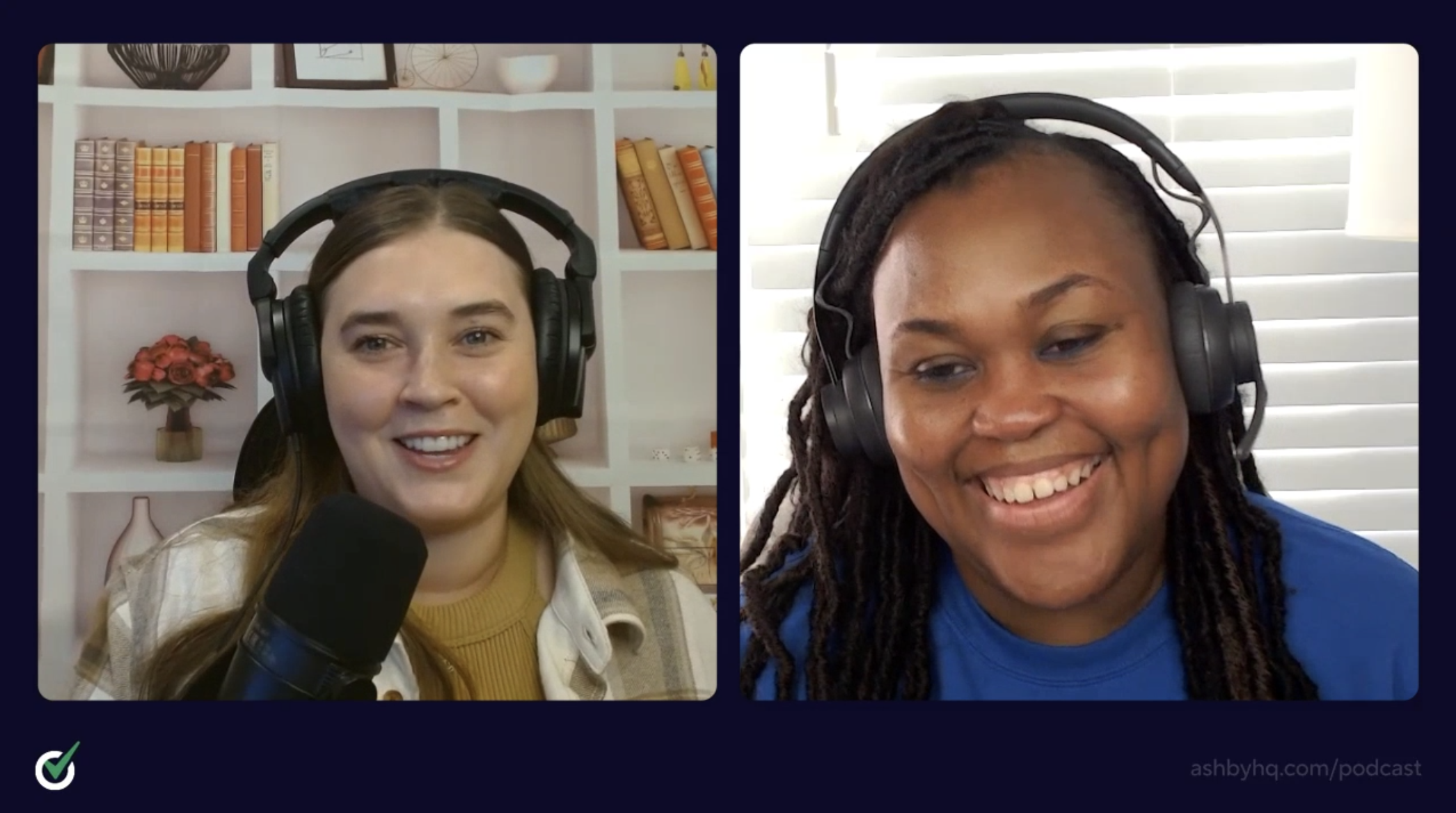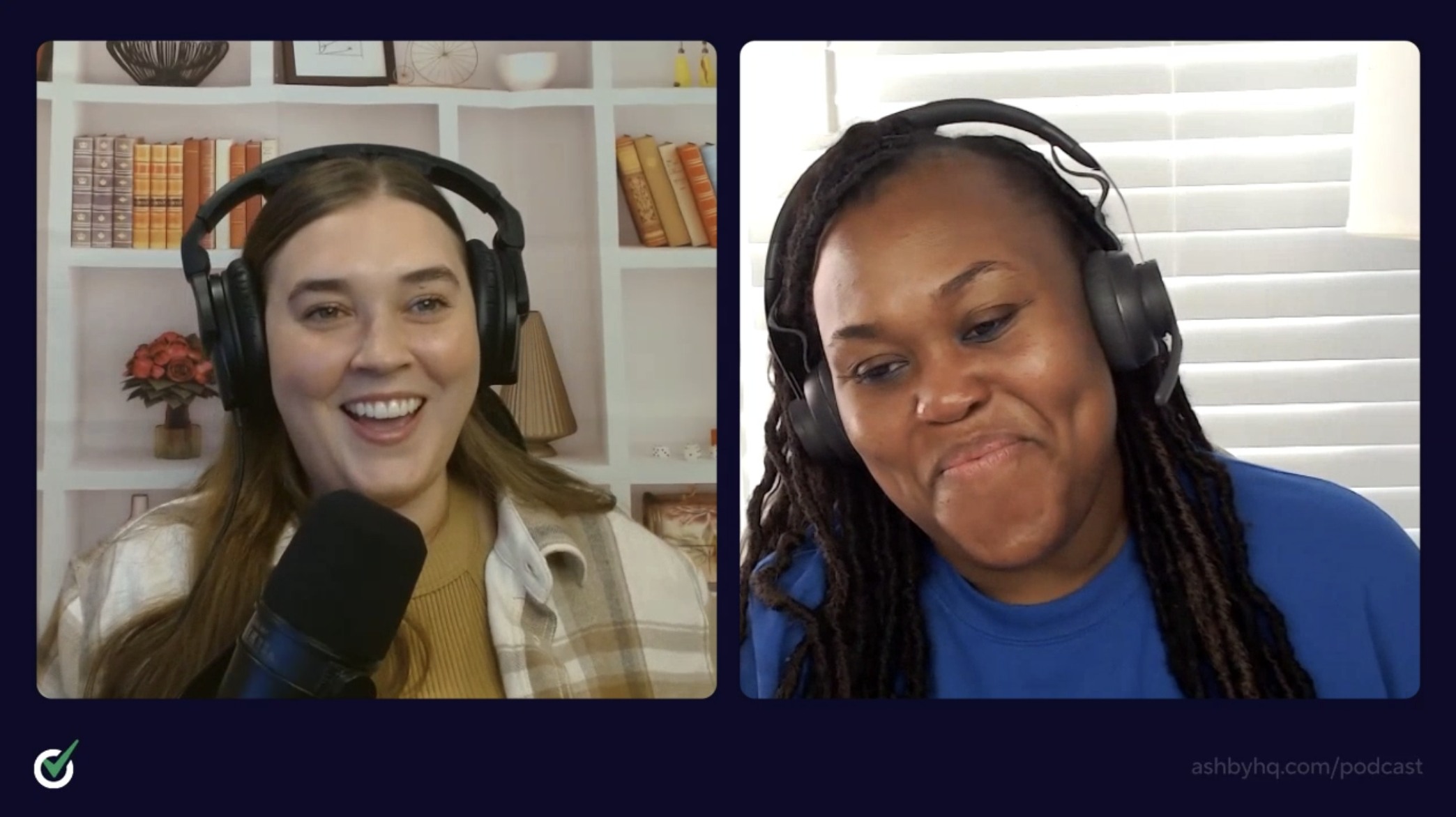Building Internal Mobility to Improve Hiring and Retention
About this Episode
Internal mobility is one of the most overlooked tools in hiring. While most teams focus on external pipelines, internal candidates often face vague processes, outdated rules, and little support. In this episode of Offer Accepted, host Shannon Ogborn sat down with Dr. Kalifa Oliver, Director of Employee Listening Strategy at Ford, to talk about how companies can build internal mobility programs that actually work. We discuss what fair internal movement looks like, why recruiting should own more of this work, and how poor design leads to talent loss.
Kalifa shares her experience shaping employee programs across people analytics, recruiting, and coaching functions. We talk about why many internal policies unintentionally reinforce inequity, how managers often respond poorly to internal moves, and what recruiters can do to build better systems. If you’re rethinking how to retain talent and hire more effectively, this episode will challenge how your company handles internal growth.
Topics
Takeaway 1
Recruiters Play a Critical Role in Internal Mobility 🤝
Recruiters are often the only bridge between internal candidates and their next opportunity. Kalifa emphasizes that internal mobility is not just an HR function, it is a recruiting one. Without recruiter involvement, internal moves become opaque, inconsistent, and easy to dismiss.
Why It Matters:
When internal candidates don’t feel supported, they disengage or leave. That creates unexpected backfills and trust breakdowns. Recruiters are uniquely positioned to guide internal talent forward, especially when a move doesn’t work out.
Quick Tips
- Follow up personally with internal candidates who aren’t selected. A rejection email isn’t enough. Internal rejections carry more weight, and silence often leads to attrition. Schedule a quick call to offer clarity, acknowledge their effort, and reinforce their value.
- Actively support internal finalists with their next move. If someone makes it to the final round and doesn’t get the role, that is when they need recruiting support the most. Kalifa highlights the importance of assigning recruiters to help them find another opportunity before they leave.
- Coach managers to see internal movement as a strength, not a threat. Kalifa calls out how often managers take internal interest personally, which can lead to retaliation or disengagement. Help managers reframe mobility as a sign of strong team development and a win for the business.
Takeaway 2
Internal Mobility Is Part of the Hiring Process 🧱
Too often, internal moves are treated informally or deprioritized compared to external hiring. Kalifa urges teams to bring structure, consistency, and fairness into every internal hiring decision.
Why It Matters:
Internal candidates are still candidates. Skipping process steps, making assumptions, or relying on familiarity can introduce bias and cause teams to miss out on great hires.
Quick Tips
- Assign recruiters to internal candidates throughout the process. Internal applicants need context, prep, and communication just like any other candidate. A recruiter can set expectations, clarify timelines, and make the process feel fair.
- Use structured interviews for internal candidates. Don’t rely on internal reputation or manager memory. Structured interviews ensure consistent evaluation and give internal candidates a chance to step into stretch roles.
- Avoid internal shortcuts that undermine fairness. Kalifa points to practices like pulling someone’s salary history or making decisions based on backchannel feedback. These shortcuts can introduce bias and create mistrust. Treat internal candidates with the same rigor and respect used in external hiring.
Takeaway 3
Internal Mobility Gaps Can Reinforce Inequity ⚖️
Internal mobility is often promoted as a growth opportunity, but without clear guidelines and fair processes, it can create more problems than it solves. When steps like compensation, movement policies, or manager discretion go unchecked, they often impact women and underrepresented groups the most.
Why It Matters:
If your internal hiring process depends on who speaks up the loudest, who a manager likes most, or who started at a higher salary, it’s likely reinforcing the very gaps you're trying to close. Equity in internal mobility doesn't happen on its own.
Quick Tips
- Review who is getting internal offers and who is being left behind. Look at movement data by race, gender, and level. If the same types of people are advancing every time, it's a sign your process needs a second look.
- Drop blanket rules like “must stay in a role for 12 months.” These types of policies often block people who are ready to grow or trying to move out of unhealthy situations. Use skill and performance, not time served, to guide decisions.
- Focus on what someone can do, not where they learned it. Kalifa puts it simply: “I don’t care where you got the skill. Can you do the job?” Internal hiring should reward ability, not credentials or background.
What Hiring Excellence Means to Kalifa
For Kalifa, Hiring Excellence means treating candidates like humans from the very first interaction. It’s not just about putting someone in a seat. It’s about designing every step of the process with care and clarity. When candidates feel respected and informed, even when they don’t get the job, the system works better for everyone.
>> Watch the Clip

Kalifa's Recruiting Hot Take 🔥
Experience doesn't equal accuracy. Kalifa calls out how often seasoned recruiters rely on gut instinct to assess talent, rather than adapting to how talent is changing. Just because something worked before doesn’t mean it still does. Her take: The best recruiters are the ones who stay curious, not the ones who think they’ve seen it all.

Timestamps
(00:00) Introduction
(01:54) Guest profile: Dr. Kalifa Oliver
(02:38) Why candidate experience is the foundation of employee experience
(05:31) Defining internal mobility
(09:20) Making internal candidates feel seen: a recruiter's responsibility
(11:48) Treating internal candidates with care
(15:46) The impact of internal mobility on DEI
(17:39) Gen Z, transparency, and the end of silent pay gaps
(21:45) Writing job descriptions that actually support mobility
(24:58) How fear-based layoffs damage productivity and well-being
(31:08) Designing soft exits that strengthen your talent brand
(36:09) What hiring excellence means to Dr. Kalifa
(37:22) Recruiting hot take: There are no shortcuts
Other Episodes
Where Increasing Internal Transparency and Accountability Can Lead to Recruiting Team Success
In this episode of Offer Accepted, Leah Knobler, VP of People at Help Scout, shares her insights on the hiring process. She discusses the importance of continuous improvement in recruiting teams, drawing parallels with sales and marketing, where constant evaluation and refinement are the norms. Leah emphasizes the need for transparency and learning from successes and failures in the hiring process.
Why Neuro-inclusive Hiring Is Crucial, and How to Excel at It
Inspired by her brother's neuro-divergence, Jhillika Kumar, CEO and Founder of Mentra, is on a mission to encourage neuro-inclusivity in the workplace. She and Shannon discuss ways to develop more neuro-inclusive hiring practices and how to create workplace accessibility for all.

Join the Hiring Excellence movement
New episodes every month - subscribe here so you never miss out.
